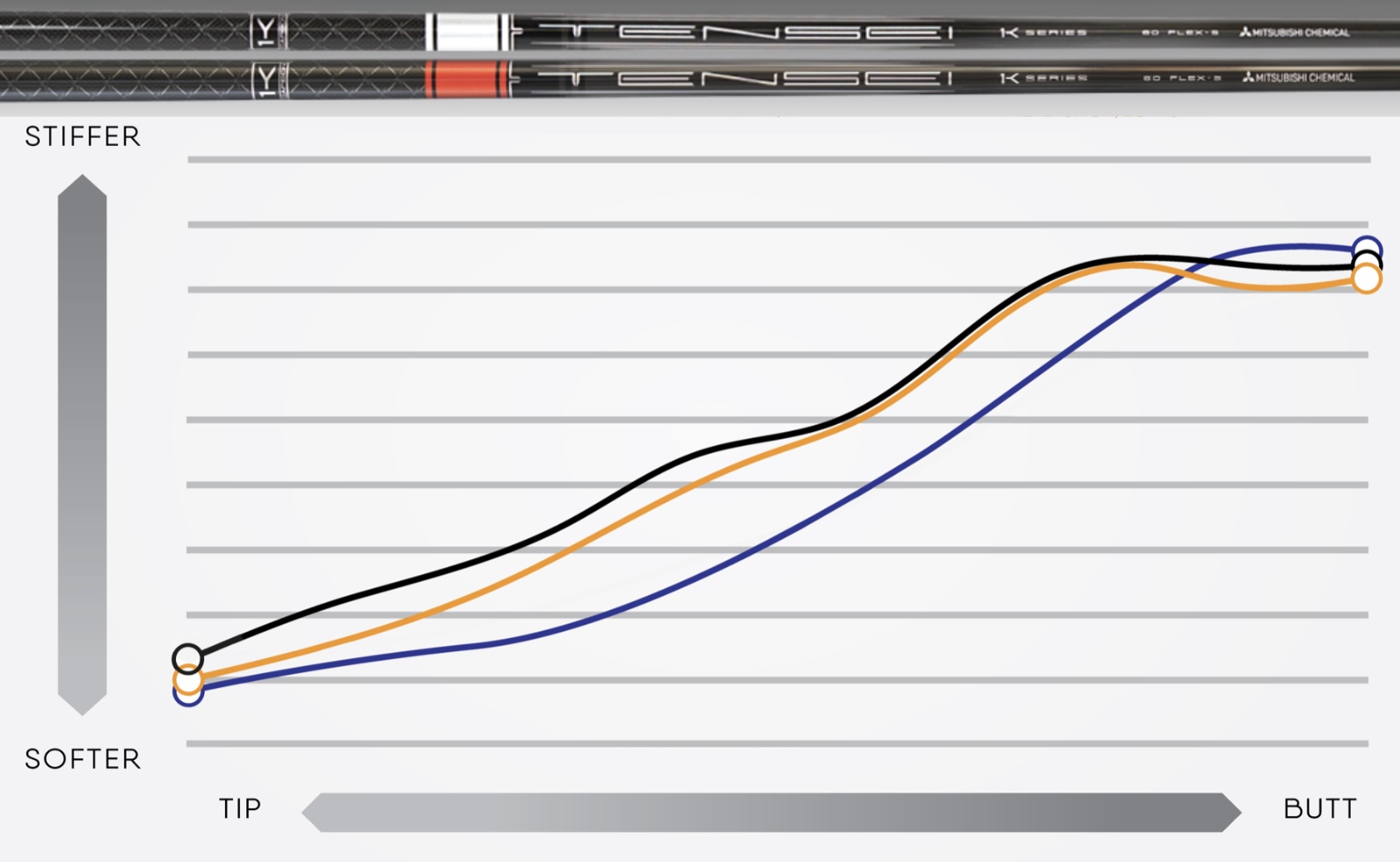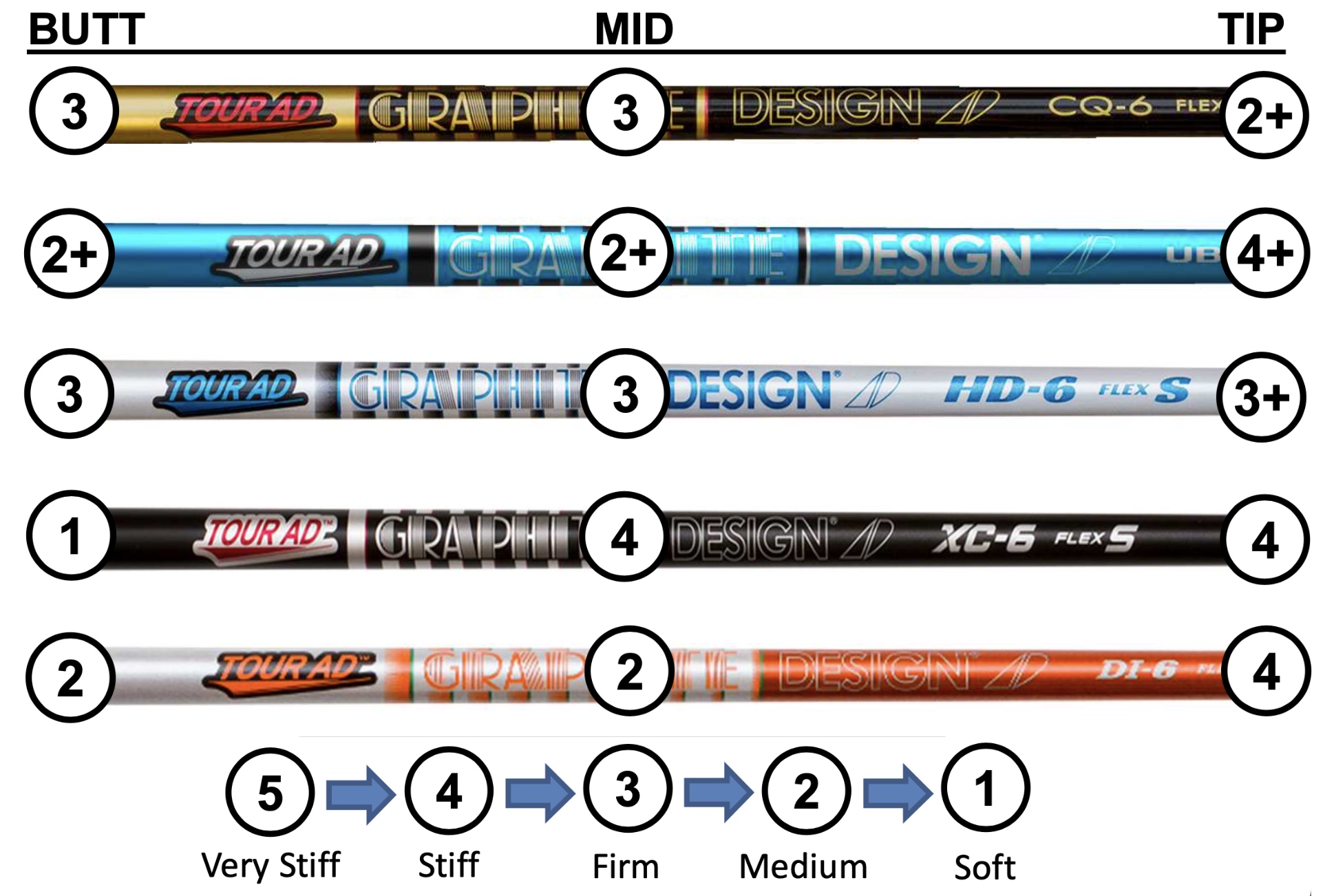Shaft Alignment
The alignment of a shaft in the clubhead has been a topic of controversy among clubmakers for many years. It originated with the observation that if you clamped a golf club at the grip end and deflected the clubhead downward followed by releasing it, the club would often be seen to wobble vigorously. But sometimes the club would oscillate smoothly up and down in a reasonably steady plane. Taken together the two observations suggested that oscillation stability of the shaft in the club might affect its performance.
The concept arose that if a shaft had a spine or a stable plane, it should be aligned along the target path to enhance consistency in shot dispersion. Articles were written about how shaft alignment could affect shot dispersion, accuracy, and distance. Debates followed about exactly how the shaft should be aligned and what technology best revealed shaft stability. Methods and equipment were patented, and competing procedures were developed for finding the stable plane of oscillation -- flat line oscillation (FLO) -- of a shaft.
Eventually clubmakers realized the shaft production process leaves most shafts with a slight residual bend. Rolling a shaft blank over a smooth surface reveals a slight amount of wobble -- it's an indication of residual bend or "shaft spine". That spine can also be detected with a deflection machine that allows the shaft to rotate to the plane of least resistance when a load is placed on both ends of the shaft. This orientation has also been termed the natural (or neutral) bending plane (NBP).
We can clamp the butt end of a shaft in a vibration frequency analyzer, add a weight to the shaft tip, and deflect the weight. Measuring the oscillation frequency in different orientations typically shows two planes of stability. One plane will have a slightly higher frequency (the "hard" side) than the other plane (the "soft" side). We use this procedure as a quality control check on the construction of the shaft -- if we find a shaft with excessive wobble, we don't use it.
Most of the time, the hard side corresponds to the plane of the spine, and more than 90% of all shafts we test have a measurable frequency differences between the two sides. The hard side and the soft side are often found 90 degrees apart. Some expensive patented equipment has been developed that shows the same thing as "FLOing" or "spining". There are frequency variations in different vibrational planes of just about any shaft you test.
We could keep going with this description, but at some point it's fair to ask what does it mean? The reality is that after more than a decade of testing by lots of folks in the industry, there is no definitive unbiased study that proves the shaft spine affects accuracy or distance. At best there are only anecdotal observations that argue for a positive effect of shaft spine or FLO or anything similar on ball trajectory. However, many players find a shaft feels slightly better and reduces dispersion when one or the other stable FLO plane is oriented in the direction of the target line. There have been no negative effects associated with aligning the FLO plane with the target line.
We don't take sides on the central issue, but we lean towards accepting the anecdotal evidence in builiding clubs. We like to build clubs with the FLO plane and natural bending tendencies aligned parallel to the target line for a reasonably stable shaft orientation in the direction of the swing. It's a worthwhile step that may enhance consistency in feel and promote improved ball dispersion.





























 John Taylor
John Taylor
Reader Comments